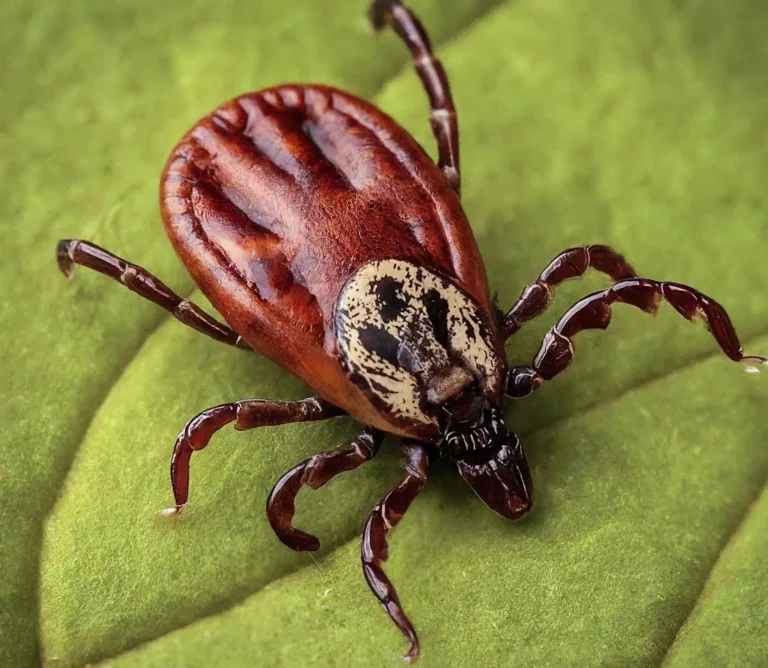Table of Contents
ToggleTicks are fascinating yet often dreaded creatures within the arachnid family, similar to spiders and mites. They are primarily known for their parasitic lifestyle, living off the blood of mammals, birds, and sometimes reptiles.
Why Lifespan Knowledge Matters
Understanding how long ticks live is crucial for assessing the risk they pose in transmitting diseases to humans and animals. It also helps in developing effective strategies for tick control and prevention.
Understanding Tick Lifespans
Ticks undergo a complex lifecycle with varying durations depending on numerous factors. The lifespan of a tick can vary dramatically not only between species but also within the same species under different environmental or host conditions. Generally, ticks can live from a few months to several years.
Species-Specific Lifespans
- Common Tick Species and Their Lifespans:
- Deer Tick (Ixodes scapularis): Known for spreading Lyme disease, typically lives two to three years.
- American Dog Tick (Dermacentor variabilis): Often carries Rocky Mountain spotted fever, with a lifespan of two to three years under optimal conditions.
- Lone Star Tick (Amblyomma americanum): Known for its aggressive biting behavior, lives approximately two years.
- Less Common Species:
- Soft Ticks (Family Argasidae): Often live in arid regions and have a shorter lifespan, varying greatly based on environmental conditions.
Tick Lifecycle Explained
Understanding the stages of a tick’s life (egg, larva, nymph, and adult) is essential for understanding how long they live and at which stages they are most vulnerable.
Duration and Development at Each Stage
Each stage has specific duration and developmental needs, influencing overall lifespan:
- Egg: Several weeks to months, depending on temperature and humidity.
- Larva and Nymph: Require a blood meal to progress to the next stage, which can take months or even years.
- Adult: Lives for several months, with females dying after laying eggs.
The Impact of Environment on Lifespan
Temperature, humidity, and geographical location play significant roles in determining the active periods and overall lifespan of ticks.
Temperature
Ticks are cold-blooded and rely on external environmental conditions to regulate their physiological processes. Temperature significantly affects their activity levels and developmental rates.
For example, higher temperatures generally increase the metabolism of ticks, leading to faster growth and quicker progression through their life stages.
Conversely, extremely low temperatures can reduce or halt their activity, leading some species to enter a state of dormancy (diapause) during winter.
Humidity
Ticks require a certain level of humidity to prevent dehydration, which is crucial for their survival, especially when they are not attached to a host.
Most ticks thrive in environments with 80% to 90% humidity. Without adequate moisture, ticks can desiccate and die, particularly in the larval and nymph stages.
Geographical Location
The geographic distribution of ticks influences their lifespans by exposing them to different climatic conditions.
Regional Variations
Ticks found in temperate regions may experience four distinct seasons, impacting their active periods and survival strategies.
In contrast, ticks in tropical regions may remain active year-round due to the consistently warm and humid conditions.
Altitude and Vegetation
Elevation can also affect temperature and humidity, further influencing tick populations. Vegetation type dictates the availability of shade and damp conditions, crucial for tick survival.
Dense forests or grassy areas provide ideal conditions for ticks by maintaining ground moisture and protection from extreme temperatures.
How Hosts Affect Lifespans
Ticks feed on various hosts, influencing their lifespan and reproduction. Larvae and nymphs typically target small mammals and birds due to their abundance, while adult ticks often prefer larger mammals like deer and livestock. This preference affects their feeding success.
Host-Specific Adaptations
Ticks evolve to adapt to specific hosts. These adaptations include behaviors like questing at certain heights (the height at which ticks cling to vegetation to latch onto passing hosts) to catch their preferred hosts more effectively.
Host Availability
- Impact on Developmental Stages: Ticks rely heavily on available hosts to progress through their life stages. Without a blood meal, larvae and nymphs cannot molt, affecting population growth.
- Seasonal and Ecological Variability: The availability of hosts can change with the seasons and environmental shifts, such as bird migration patterns and land use changes, impacting tick populations.
Host Interaction and Tick Survival
- Feeding Behavior: The success of a tick’s feed influences its lifespan and reproductive capabilities, providing necessary nutrients for survival and egg development.
- Transmission Dynamics: Hosts also facilitate pathogen transmission among ticks, which can alter tick populations by affecting their mortality and behavior.
FAQs
Ticks’ lifespans vary based on their hosts. Larvae and nymphs often feed on smaller mammals and birds, while adults might feed on larger mammals like deer, affecting their survival and reproduction success.
Certain tick species have developed specific adaptations for their hosts. For example, they may alter their questing behavior, which is how they position themselves on vegetation to latch onto passing animals, based on the typical paths of their preferred hosts.
Host availability is crucial for ticks to progress through their life stages. Without access to hosts for blood meals, ticks cannot molt and mature into the next stage of their life cycle, impacting their population dynamics.
The presence of hosts for ticks can vary with the seasons. For instance, migratory birds can offer seasonal feeding opportunities, and changes in land use can affect the availability of wild hosts.
The success of a tick’s feeding process is essential for its longevity and reproduction, as it allows them to store nutrients necessary for molting, surviving inactive periods, and, in females, developing eggs.
Ticks can act as vectors for diseases, transmitting pathogens between hosts during feeding. This can influence tick populations if these pathogens affect mortality rates or modify tick behaviors.
Take Action Against Ticks with On Demand Pest Control
Dealing with ticks is more than just an inconvenience; it’s a matter of safeguarding your health and that of your loved ones, including your pets. At On Demand Pest Control, we specialize in comprehensive tick management solutions that are tailored to the unique climates and environments across Florida.
Our team of experts is equipped with the latest tools and techniques to ensure that your outdoor spaces remain free from ticks and other pests. Whether you’re concerned about Lyme disease, Rocky Mountain spotted fever, or simply want to enjoy your backyard without the threat of ticks, we’re here to help.
Don’t let ticks take over your outdoor experience. Reach out to On Demand Pest Control today, and take the first step towards a safer, pest-free environment. We offer services throughout Florida, including Fort Lauderdale, Hollywood, and Naples. For peace of mind and professional pest control, there’s no better choice than On Demand.
For more information and to request your free quote, Contact Us today. Let us help you keep your space tick-free with our reliable and effective pest control solutions.




